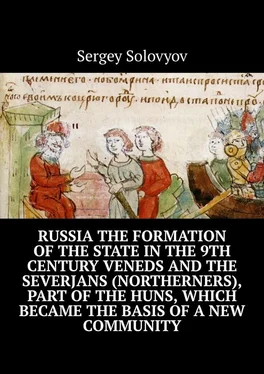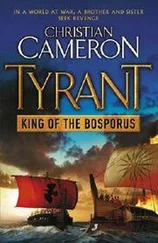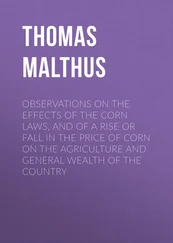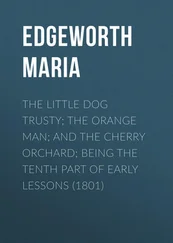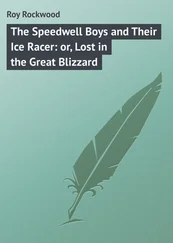But, as you can see, the Aryans are at some distance from the Andronovites-gans (gants). Those who came to China, India, and reached Europe. Toponymy with word formation from the ethnonym Aryan in Europe is vanishingly small, as is the mention of the Aryans in the form of forefathers, ancestor spirits. In Europe, in the form of forefathers, spirits, only manna and huns are present.
In linguistics, the Aryans (or Indo-Iranians) mean only two groups of Indo-Europeans: all peoples speaking the languages of the Indo-Aryan group, and all Iranian-speaking peoples. The ancestral home of the Aryans, according to some assumptions, was located between the Dniester and Ural rivers (Yamnaya culture).
The Iranian group of peoples includes modern Ossetians, Persians, Tajiks, Afghans, Kurds, Baluchis and some other peoples. All of them speak languages derived from the common Iranian language-base, which in the II millennium BC. spoke the Iranian Aryans.
At the end of the 2nd millennium BC. the Iranian community split into two groups of tribes. Northern Iranians included the ancestors of the Scythians, Sogdians, Bactrians, Khorezmians. The southern group of tribes included the ancestors of the Medes, Persians, Kurds, Baluchis, and other Iranian peoples. This group of tribes can be called southern because they left the European ancestral home to the south and occupied the Iranian Highlands, that is, the territory of the modern states of Iran and Afghanistan. But the northern Iranians also went far beyond the boundaries of the Aryan ancestral home. The Bactrians, Sogdians, Khorezmians advanced to Central Asia.
Vedic literature is characterized by the use of ārya- as a common ethnonym for all Aryan tribes who professed the Vedic religion and opposed to anārya- “non-Aryan”, dasyu-, dasa “enemies-aborigines” (das), mleccha- “barbarian”. In the meaning of “noble”, he united three “twice-born” varnas (brahmanas, kshatriyas and vaisyas), opposed to the sudras as varna of non-Aryan origin. In the meaning of “people” they designated mainly the vaisyas (that is, “common people”) in contrast to the brahmanas and kshatriyas.
In the Rig Veda, the ethnonym is mentioned 36 times in 34 hymns. The Aryan world in the Rig Veda includes primarily Sapta Sindhavaḥ (Semirechye, Punjab rivers) and unites 5 large tribes: Anu, Druhyu, Yadu, Turvaśa and Pūru. In the era of the later Vedas, the center of the Indo-Aryans shifted to the east, to present-day Haryana, where the Bhārata tribe rises. The meaning of the word ārya- is increasingly associated with the Vedic religious cult, the concept of vratya- (“apostates”) appears – groups of people of Aryan origin who do not adhere to all the precepts of the Vedas. The tribal names will then be extremely important in the future. And here is the union of SEVEN tribes, no more and no less. Anu, Druhyu, Yadu, Turvaśa and Pūru. Also mentioned are the Bharat and Tritsu tribes. Perhaps this is all seven tribes. Yadu, Yada is also mentioned much later, in Chinese sources, both Hephthalite Huns and Sakas were called so.
One of the tales that have come down to our time, Takhir and Zuhra, is very similar in plot to the myths of Dionysus. Takhir, like Dionysus, Perseus and Guidon, is thrown into the river (not the sea. There are no seas in Central Asia), and the barrel is washed ashore, where Zukhra saves him.
Shukra is Venus in the representation of the Hindus. Shukra (Śukra IAST “clear, pure, white”) or Shukracharya is the son of Bhrigu in Hinduism, the teacher of the Daityas and the guru of the asuras, who has the knowledge of the resurrection of the dead. As you can see, Zukhra reminds Elena the Beautiful of Russian fairy tales, Elena the Beautiful Hellas. After all, Elena literally from Greek is a light. Yes, and Aphrodite herself or Venus. The name Takhir is undoubtedly identical to the name of Targitai of the Scythians and Tarh of the Rus, Tarhunt – “thunder and lightning”, Tarhunt (Tarhun) – the Hittite god of thunder, the Etruscans also had the legendary first king Tarhunt or Tarhont.
That is, earlier, the Aryans of Iran constituted a cultural community with other tribes of Indo-Europeans.
Hyksos. The Andronovites reach Egypt. Three horses harnessed to chariots
The Hyksos is a union of tribes, according to legends, which conquered Egypt in the 2nd quarter of the 2nd millennium BC.
According to the Greek-language “Egyptian History” of the Egyptian priest Manetho (III century BC), the Asian people of “unknown origin” invaded Egypt and under the leadership of their leaders, who fortified in the eastern part of the Delta in the city of Avaris (Egyptian Hat-Uar or Hut -Uaret), for a long time held power over the Egyptians, cruelly oppressing them; however, after a long war, the Hyksos were expelled from Egypt by the local rulers of Thebes, who reunited the country under their rule and restored its independence (Manetho. Fr. 42—52). According to Manetho, the Egyptians called the conquerors a phrase meaning “shepherd kings” and sounds in Greek transcription like the Hyksos (ὑκσώς).
The Hyksos invaded with chariots, armor, bronze weapons, and compound bows. It was from the Hyksos that the Egyptians borrowed such inventions as the war chariot and the composite bow, which was distinguished by a greater range. It is believed that a Hyksos chariot drawn by two or three armored horses usually had two warriors. One of them, a charioteer, drove a team and held a small shield in his hand, protecting himself and the archer standing next to enemy arrows and javelins. The archer, on the other hand, was dressed in a helmet and scaled or plate armor made of bronze. His neck was securely covered by a strong wide collar. In case of close combat, the archer and the driver had swords. But in the Homeric tradition of Homer’s Iliad, and according to the image on the stele from Mycenae, the chariot’s main weapon was the longest peak.
However, judging by the well-known episode of the battle of Ramses II with the Hittites: “And there were three of them (enemies) per chariot,” and with him (Ramses II) there was not even “neither a marianne (charioteer) nor a shield-bearer” – the crew of the Hittite chariot consisted of three people. In the legend about Karatu, who besieged (Post-Hyksos period) Udm (Edom) the Great, the capital of the kingdom of the Hurrians, the father of the Hurrian maiden, the king, wishing to pay off, suggests: “Take silver and gold, as much gold as you want; take three horses and a chariot” … Karath needs a wife, and he rejects the offer: “Why do I need… a chariot with three yokes, well fitted.” Consequently, three horses were also harnessed to a Hurrian chariot (possibly a royal one). And here an interesting detail opens up – troikas harnessed to carts. The author knows of no other triplets in antiquity, except in Russia.
“No, – so that no one, on the art of driving and on strength,
Before others, I didn’t blaze in front with sopostatami to beat or turn back: you will weaken yourself.
Who, in his chariot, will come to another chariot, with a lance ahead: the best way for horsemen.
Doing so, both ancient walls and hailstones were smashed,
keeping the mind and spirit in the valiant Persians “Iliad, Homer
But all the same, the battle was fought by chariot fighters with shock long spears, in the manner of medieval knights. The formation of the chariot fighters was relatively free, linear, for possible maneuver. The goal was to knock an enemy soldier off the chariot, and the spear had to break, otherwise the impulse would have thrown the warrior out of the chariot. In the event of an attack by the chariot fighters of the enemy infantry, the maneuver was even more difficult. The chariot was supposed to attack the infantry not head-on, into the front, but at an acute angle – that is, the driver ruled along the enemy formation, and the warrior smashed the infantry with a heavy spear. If the chariot fighter used a ramming blow, then the spear broke, and the warrior used a spare. Horses, unlike war elephants, cannot push through infantry. Therefore, chariots cannot and could not break through the infantry formation, they only inflicted huge damage on the infantry, remaining invulnerable. Later, the Klibanarii acted in the same way against the infantry – they drove up to the ranks, struck a terrible blow with a spear, and drove away, remaining invulnerable. Moreover, the rider’s spear must break, otherwise he could fly out of the saddle. The union of the Hyksos tribes included the Danaans, as the Hellenic myths say. They say that Danai and Egypt were brothers, Danai ruled Libya, and Egypt ruled Egypt, that is, the Danai ruled northern Egypt, such data remained in Greek myths. Having quarreled, Egypt expelled Danae and his daughters from Egypt, and they settled in the Peloponnese. The names of the cities of the Hyksos, Tanais and Avaris, are also important, obviously from the names of the tribesmen (Varov-Avars and Danes-Danai). In Greek sources, there is also the leader Hunei, who remained in Egypt after the Trojan War.
Читать дальше
